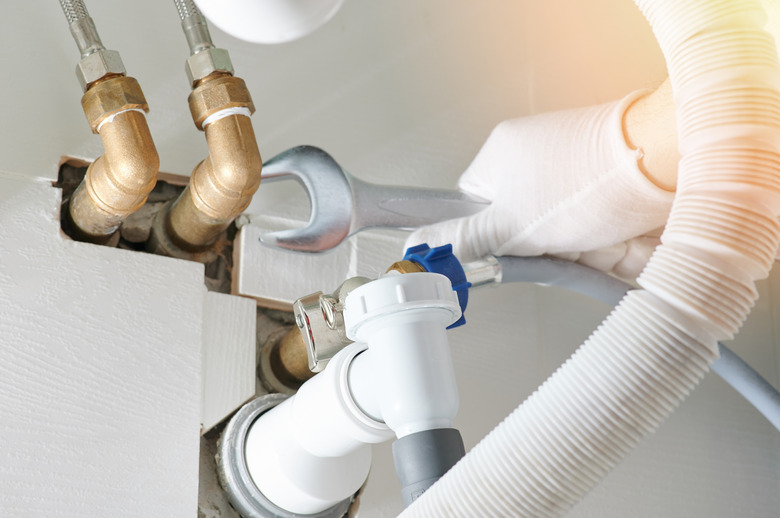What Is The Difference Between A Plumber's Dope And A Plumber's Putty?
We may receive a commission on purchases made from links.
Leaky joints separate a successful plumbing job from one that doesn't meet expectations. If not sealed properly, areas where pipes or fixtures meet could produce an annoying drip or even major water damage in your home. Both plumber's dope and plumber's putty help provide watertight seals, but each is used for a different application.
Tip
Both plumber's dope and plumber's putty are used to prevent leaks where plumbing pieces meet. Plumber's dope is used where threaded pipes are joined together, while plumber's putty is used to seal flanges. They have some similarities in their consistency, but they're also different in how they work and are applied.
What Is Pipe Dope?
What Is Pipe Dope?
Pipe dope, or plumber's dope, is a slang term for pipe joint compound. The product comes in a jar and is the consistency of thin mashed potatoes. Pipe dope doesn't harden; it stays pasty, never becoming brittle or flaky. Those properties make it fairly easy to apply and ensure that the material fills all the voids created by threaded pipes.
Be careful to choose the right pipe dope for your application. Pipe dope comes in two formulations: one for plumbing fixtures and one for gas or propane fixtures. You can also use Teflon tape to prevent leaks when you're connecting threaded pipes. When comparing Teflon tape and pipe dope, the tape is less messy, but pipe dope often fills the gaps better.
Using Pipe Dope
Using Pipe Dope
Equipped with an applicator, pipe dope brushes onto the male end of a pipe fitting. Apply it just before screwing two pipes together or before attaching a pipe to an elbow or similar joint. Coat the threads with a liberal amount of dope applied evenly across the fittings. Any excess will ooze out and can be wiped away. Once hand tightened, finish with a few turns using a pipe wrench.
What Is Plumber's Putty?
What Is Plumber's Putty?
Plumber's putty is malleable, thick, and shapes with ease. The putty is made with mineral and vegetable oils, which help it stay flexible. Like pipe dope, plumber's putty doesn't harden or dry out, and it won't shrink or crumble. As it fills up the space between two rigid components, it creates a watertight seal.
Putty is not made to coat pipe threads. Instead, it is used to seal flanges, like the one on a drainpipe where it meets the sink. Putty is also used to seal the space where a faucet meets the sink. Plumber's putty will not stand up to water pressure, so it acts more as a barrier that prevents water from leaking behind a fixture.
Using Plumber's Putty
Using Plumber's Putty
Normal plumber's putty is oil-based and can stain granite, marble, and other porous materials. If you're using it near these items, look for an oil-free, non-staining plumber's putty.
Work a ball of plumber's putty in your hands to soften it up, then stretch the material into a long, snake-like form about 1/2-inch thick. Press it into place on the flange or fixture, and tighten the piece into position. Excess putty will squeeze out of the joint and can be put back in the jar for later use if it doesn't have any dirt or debris in it. Wipe the surface clean to remove any putty remnants.
